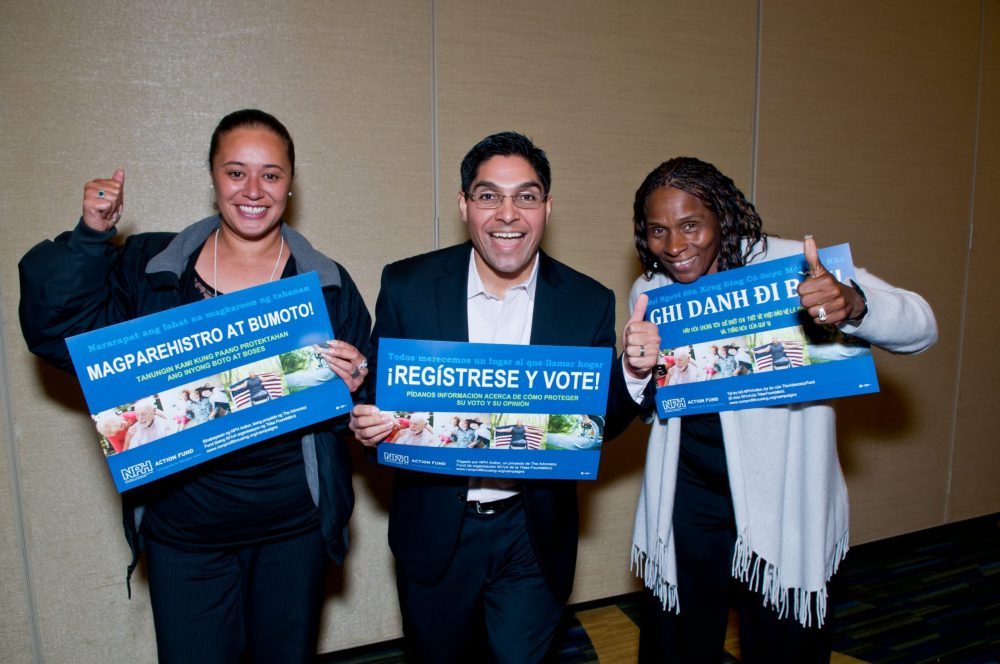
Co-op City in the Bronx was developed as affordable housing for moderate-income families under the Mitchell-Lama program. Using a residual-income approach to measuring affordability shows that units like these are needed in the city. Photo by Jules Antonio, via flickr, CC BY SA
Among housing professionals, there is widespread agreement that if a household spends more than 30 percent of its income on housing, that household can (in most cases) be considered “housing cost burdened.” But is the inverse true? If households spend less than 30 percent of their income in rent, does that make their housing “affordable”?
It’s clear that a household with a very high income—say, one headed by a stockbroker making $500,000 a year—can easily spend $150,000 a year on luxury housing and still have enough left for other things. We can safely assume they will be OK, even if they spent even more on housing.
It is equally obvious that some households have such low incomes that basic survival consumes all of their available cash so they cannot afford to spend anything on rent. But what about the households that lie between those two extremes? What about a home health aide who is trying to support herself and three children on an annual salary of $22,370, the median salary for this occupation in 2015, according to the U.S. Bureau of Labor Statistics (BLS)? Or a household headed by a firefighter making $73,700? Could these households afford to spend 30 percent of their income in rent and still manage to live decently in New York City?
Phrasing the question this way follows the logic of a “residual-income approach” to the housing affordability analysis. Since housing is often the largest and least flexible item in a family’s budget—the bill that must be paid on time to avoid the threat of homelessness—the residual-income approach looks at how much money is left after paying for housing for a family to meet its non-housing needs. This approach has many advantages, not the least of which is that it has common sense logic to it. Moreover, for the researcher and housing practitioner alike, it provides a clear method for analyzing affordability across a range of household types, incomes, and geographical locations. It offers the possibility of helping us understand exactly when the 30 percent standard credibly defines affordability and when it does not. In this way, the residual-income approach can turn what all too often becomes an abstract and theoretical discussion into a series of researchable questions.
A residual-income analysis involves a pretty straightforward cross-referencing of cost-of-living data with household income data.
My analysis focuses on New York City, where I live and work. But since the data sources are publicly available and national in scope, it could be replicated in many other communities across the country.
I drew my estimates of the cost of living from the Economic Policy Institute’s (EPI) 2015 Family Budget Calculator, which “… measures the income a family needs in order to attain a modest yet adequate standard of living.” EPI bases its food cost estimates, for example, on the USDA’s low-cost plan, the second cheapest of four basic meal plans. For November 2016, the low-cost plan for a family of two adults and two children was $708.40 to $838.50, depending on the age of the children. Health care estimates are based on the lowest cost bronze package offered on Affordable Care Act exchanges, plus estimated out-of-pocket expenses. The “other necessities” line comes from the second lowest quintile of the BLS’s Consumer Expenditure Survey, and includes items such as apparel, personal care expenses, household supplies, telephone service, and school supplies. The budgets that the EPI calculator produces are so “modest” that they do not include savings, college tuition, a retirement fund, or anything that could be considered a “luxury” item. They do assume car ownership and in-center child care.
The EPI presents data for 10 different family configurations, from a single adult to a two-adult household with four children. I looked at each of these 10 configurations using the EPI data for all budget lines except housing. Then I filled in 30 percent of various incomes as the housing line, and looked to see if the total budget exceeded the total income.
It was relatively easy to test whether the 30 percent standard results in housing affordability for any number of hypothetical wage-earning families using the salary data for various occupations from the BLS website. It’s a bit more complicated to compare EPI family budgets with the household incomes listed on the area median income (AMI) charts on the U.S. Department of Housing and Urban Development (HUD) website. The two data sets don’t always line up. For example, AMI data for a three-person household could refer to a single parent and two kids, two parents and one kid, or three adults. (This problem doesn’t negate the basic import of my analysis, but it is something to keep in mind when making comparisons in terms of AMI.)
Let’s return to the example of the home health aide with three children making $22,370 (roughly 35 percent AMI). Using the 30 percent standard, this person would be able to afford $559 a month in rent. Since it would be extremely unlikely to find a two-bedroom apartment at that price in the private market, such a scenario would only be remotely possible if this household were one of the lucky few to live in subsidized housing. Nonetheless, the money that would remain to cover all other living expenses—food, clothing, transportation, health care, child care, etc.—is more than $5,000 a month short of what EPI estimates would be required to live modestly in New York. Clearly this family, even though it is headed by a working person, cannot make ends meet in New York City. Realizing this fact helps one understand why family homelessness in New York has reached record levels.
And what about the firefighter earning $73,700 (roughly 81 percent AMI)? Let’s assume this person is part of a four-person household with a homemaker spouse and two children. Using the 30 percent standard, this household would be able to pay $2,011 a month for housing. You can actually find two-bedroom apartments for this price in the outer boroughs of New York City. But to spend that much would leave them almost $30,000 a year short of attaining the EPI’s modest standard of living. Applying the 30 percent standard in this scenario results in financial stress rather than affordability.
The 30 percent standard only ‘works’ in calculations where it is irrelevant.
The firefighter household’s problem might be solved if the spouse got a job, say, as a bookkeeper earning $43,230 a year. That would give the household an income of $116,930, and they would hit break-even in terms of the EPI’s modest family budget. Such an income would place them at about 129 percent of the area median income. This is about the income level where the 30 percent standard begins to work for a family of four in New York City.
What conclusions can be drawn from all this? There are several.
- If self-sufficiency is the goal, the 30 percent standard does not work out to “affordability” for low-, moderate-, or even most middle-income people, at least in New York City. Paying 30 percent of a household’s income in rent results in deficits in all 10 of EPI’s family configuration categories at 30 percent, 50 percent, and 60 percent AMI. At 80 percent, the only category that works is the single adult. A two-adult household comes close, but none of the households with children achieve a balanced budget even with incomes at 80 percent AMI. Clearly, as a method of setting monthly charges in subsidized housing developments, the 30 percent standard is indefensible.
- The 30 percent standard is also not a family-friendly policy. While a couple with an annual income of $58,500 (about 81 percent AMI) can break even, once a first child is born, they would be almost $19,000 a year in the red. The deficit exceeds $30,000 with the second child. Once children are in the mix, incomes between 111 and 138 percent AMI are required to live modestly in New York after paying 30 percent to cover housing.
- The 30 percent standard does appear to “work” for households higher up the income spectrum. But then the standard would almost never be applied to such households, as they would be ineligible for most federally subsidized housing in the first place. In other words, the 30 percent standard only “works” in calculations where it is irrelevant.
- To state explicitly what should be obvious: No single number, 30 percent or any other percent, could possibly calculate housing affordability across the full range of household types and incomes. As a tool, it is simply too blunt an instrument. But also, 30 percent is too high a percentage, especially for those who have lower incomes.
So if it’s abundantly clear that the 30 percent rent-to-income ratio does not adequately define “affordability,” at least in certain markets, why is it still the gospel that informs so much of the working lives of affordable housing practitioners? For decades, the academic literature has been telling us that the standard lacks any basis in credible research or logic. Yet in a conversation with a room full of affordable housing folks—nonprofit developers and advocates alike—questioning the 30 percent standard is likely to cause most people’s eyes to glaze over. It’s not hard to understand why.
In New York City, according to recent census data, more than 1 million households are paying more than 30 percent of their income in rent, and more than 600,000 are paying more than 50 percent. Reducing their burden to only 30 percent is noble, necessary, and difficult work. In our drive to succeed in the face of this challenge, we become so wrapped up in getting our projects financed and built that we simply do have not time to contest a federal affordability standard that we have little hope of changing.
Still, it is worth pointing out that 30 percent was not always the federal standard. When the National Housing Act passed in 1937 and later amended in 1940, the maximum rent in public housing could not exceed 25 percent of a tenant’s income. (It could be lower. This was a rent ceiling, not a rent-setting provision.) The 30 percent standard was not introduced until 1981, as part of the Reagan administration’s efforts to reduce federal support for public housing and subsidized housing generally. There were absolutely no credible econometric studies then, or since, to justify this change. The 30 percent standard is more a creature of political budgeting than economic analysis.
Given that the recent election has put so many urgent political struggles on the progressive agenda, some might argue that this may not be an opportune time to take on this particular issue. While we can hope that an opportunity to raise this issue and win the fight to bring sanity and logic to the concept of housing affordability comes soon, in the meantime, we need to at least openly acknowledge the major flaws in this “affordable” standard. We could call the work we do and housing we build using the 30 percent standard “a step in the right direction,” or “an incremental improvement in the face of a severe housing crisis,” or “another example of the inadequate federal response to the housing crunch,” or “a bad law that we have to make work anyway if we want to get anything done.”
Call it anything you want. Just don’t call it “affordable.”





Richard, I loved your detailed analysis for the hypothetical home health aide with three children who earns $22,370. However, you forget that at her income level, she also receives an Earned Income Tax Credit (EITC) of $5,250. In addition, she receives about $7,788 per year in SNAP assistance to buy food. Medicaid also pays for all of her family’s health care expenses. Because of these benefits, her actual or at least effective income is far higher than $22,370. This is well over double her nominal when you consider the market value of Medicaid, but only 60% higher in the unlikely case that she and her children never use health care.
I don’t mention this to be an ogre, but to illustrate the complexity of using the “residual-income approach” and the absurdity of using it when you ignore 30% to 60% of a household’s income. If we go to a residual-income approach, we will need to include these and other public benefits into the calculations. To ignore them would be unfair to those who don’t receive the benefits.
Either way, the residual-income approach is more complicated and time consuming. It also makes it impossible to project incomes for housing developments. These are primarily reasons why so many people settle on the 30% of income approach. It’s not perfect, but it seems to work.
As you undoubtedly know, there are also significant problems with the implementation of the 30% of income approach. In a tax credit project, for example, the affordable rent for very low income units is set at 30% of the income limit. This means that virtually every very low income tenant pays more than 30% of income (excluding benefits). Some by small amounts. Others by large amounts. An extremely low income tenant who occupies a very low income unit will pay 50% of their income for housing and that would be considered “affordable” (i.e., 30% of 50% of AMI equals 50% of 30% of AMI).
I’m glad you mention that the Reagan administration increased the housing affordability standard from 25% to 30%. I wouldn’t be surprised if the Trump administration miraculously reduces the housing cost burden of Americans by redefining affordability to 35% or even 40%. I can imagine the press conference now…
Thanks for adding to the discussion.
Thank you for your thoughtful response, and for pointing out the additional income supports available to some low income households. I took your information and made revisions to my calculations. But while the numbers are a little better, it doesn’t really change the conclusion.
As I noted in my article, after paying 30% of her income in rent ($559), the home health aide with 3 children would have a residual income that is about $5000 a month short of what it would take for a family of four to live decently in New York City. (On my spreadsheet, it is actually $5,452, but I chose to use a low-ball round number to emphasize that we are dealing with estimates only.) Your suggested adjustments (additions to income and the elimination of all health care expenses), reduce the shortfall to $3,696. The fact remains that the 30% standard still doesn’t work for the working poor, which is where it is most relevant and most needed. Even when the additional income supports are factored in, the 30% standard doesn’t result in “affordability,” which is why more people with jobs are living in New York City’s homeless shelters than ever before.
It is equally important to note that the 30% standard doesn’t work for higher, moderate income families either. As the article includes another example – one headed by a firefighter with an income of $73,700 (81%AMI) – and the 30% standard still doesn’t work. The 30% standard does work when you get into income ranges that would be considered middle class or upper middle class (110% to 140% AMI), but very few of those households are likely to find themselves in a situation where the might be applying for a rent subsidy. And this is my “big picture” point: the 30% standard does not define affordability in those cases where it is more likely to be applied – the working poor and households with moderate incomes.
I completely agree with your other point: that the residual income approach is more complicated in its calculations and presents problems in the real world of affordable housing development where the goal is to put together financing for deals in the most efficient manner possible. Perhaps there is another approach? Should we perhaps begin talking about a sliding scale – one that takes into account income and family size – instead of pretending that a one-size-fits-all 30% delivers affordability? Such an approach might increase fairness, while still preserving a measure of efficiency.